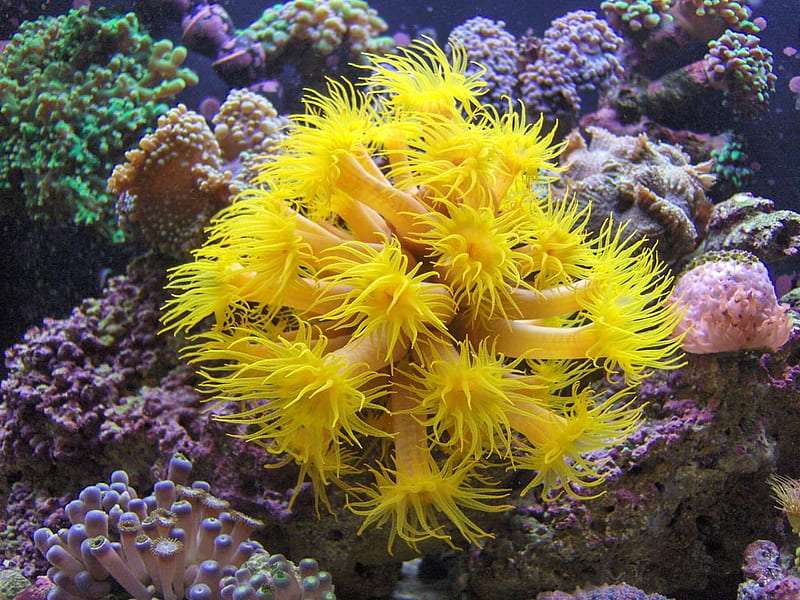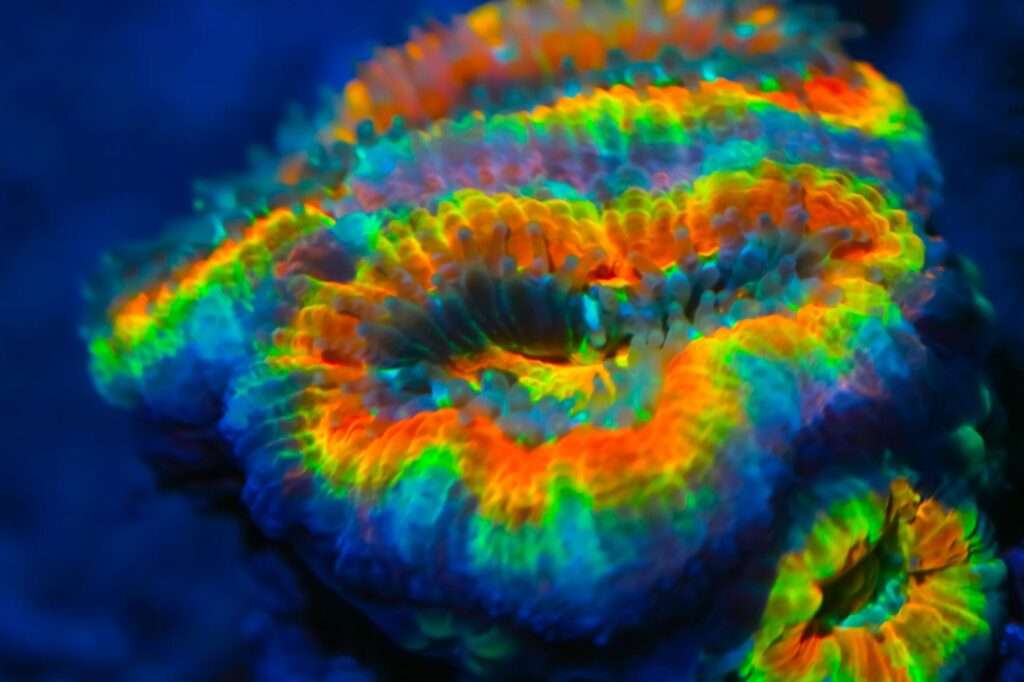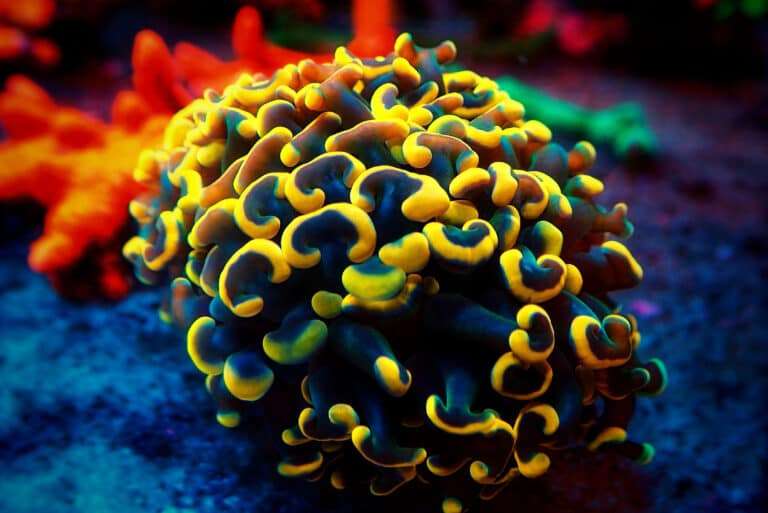
The beautiful Yellow Sun Coral, Tubastraea aurea, is a mildly coloured variant of the Tubastraea genus. Another gorgeous coral for pictures. The T. aurea corallites, which are tough, spherical, tubular structures that house the polyps, are covered by a tissue known as the coenosteum. The coenosteum is yellow, the core of the polyps is a mild red-orange tint, and the tentacles are gently coloured in tan or golden hues.
Yellow Sun Corals generally extend their polyps tentacles at night, though if there is food nearby, they may do so during the day as well. Only the yellow coenosteum, which gives the coral the appearance of a ball with raised, flat, spherical nubs, is visible during the daytime when the coral is entirely retracted.
Habitat
Lesson first outlined the Tubastraea genus in 1829. These corals are azooxanthellate corals, also known as non-photosynthetic corals, meaning that light has no bearing on their growth and that they only eat food. They are primarily ahermatypic corals, which do not produce reefs. In waters with a high nutrient content and vigorous water flow, the T. aurea live at cave entrances and beneath overhangs. They have also been discovered in regions away from the reef that receive sunshine. The range of their depths is 0 to 131 feet (0 – 40 m).
Morphology
The Tubastraea genus is best known for its Yellow Sun Coral. Around 5″ (13 cm) in diameter, T. aurea colonies occasionally grow on one another to create a more intricate and substantial “community.” It is an ahermatypic coral, which does not produce reefs. A tissue known as coenosteum covers their Corallites, or the hard, spherical, tubular structure the polyp resides in. The Yellow Sun Coral has highly fleshy polyps that stretch mostly at night, however if food is available, they may also do so during the day. The coral’s tentacles are only very faintly coloured, with the coenosteum being a yellowish tint and the core of the polyps having a mild reddish-orange hue. Only the yellow coenosteum, which resembles a ball with elevated, flat, round nubs, is visible during the day because the coral has totally withered away. These corals are supposed to barely grow 1.6 inches a year (4 cm). Unknown is the lifespan.
In Captivity

- Feeding
Corals in the azooxanthellate, or non-photosynthetic, genus Tubastraea are so-called. They may absorb dissolved organic matter, food particles from the water column, and planktonic creatures to feed. Others eat little fish as well. The Yellow Sun Coral must be given decent-sized feeds in captivity, such as enhanced defrosted, live, or freeze-dried adult mysis shrimp, brine shrimp, and other prey of a comparable size. Put the meal in a vitamin solution to help the coral reproduce more quickly. They appear “bloated” if they have been well-fed. Eat each day. Before they begin to feed, young colonies could require the shrimp juice to linger for a few nights on the tops of their closed polyps. The process could take up to two weeks, so be patient and persistent. The finest results come from feeding at the same time every night. If these corals are not nourished, they will stop spreading their tentacles and eventually die.
- Social Interactions and Compatibility
Other corals are not threatened by the T. aurea. However, it’s crucial to keep them separate from other corals because they lack strong stinging tentacles. The only impact they will have on other corals will be from their frequent feeding requirements, which may cause water pollution.
The Tubastrea Snail Epitonium billeeanum feeds on the Tubastraea genus. These snails resemble coral polyps in both colour and shape when they are closed. Another annoyance is the nudibranch Phestilla melanobrachia. It has the hue of the particular Tubastraea that it consumes. When you receive your specimen, carefully inspect it to look for and eliminate these pests.
Table





